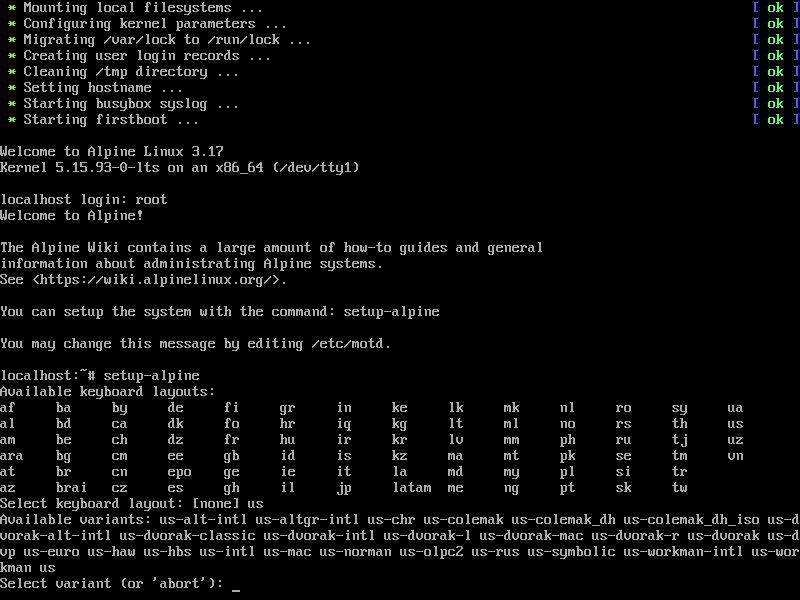Alpine Linux Vs. Void Linux: Lightweight And Independent

Executive Summary

Alpine Linux and Void Linux are two popular lightweight, independent Linux distributions. Both are known for their speed, security, and versatility, making them ideal for various applications. This article analyzes and compares Alpine Linux and Void Linux, highlighting their distinct features, similarities, and differences.

Introduction:
Alpine Linux and Void Linux are considered minimalist Linux distributions engineered for performance and efficiency. These distributions provide a solid platform for various applications, including embedded systems, servers, and lightweight desktops. This detailed comparison showcases their capabilities and suitability for different use cases.
Similarities Between Alpine Linux And Void Linux:
1. Lightweight And Fast:
- By nature, both distributions are lightweight and resource-efficient.
- Streamlined components, optimized packages, and efficient design lead to fast boot times, rapid application loading, and overall improved system responsiveness.
2. Simplicity and Flexibility:
- Emphasize simplicity, with clear and well-organized package management systems.
- Provide flexible installation options and minimal configuration requirements, making them suitable for various hardware setups.
3. Security-Focused:
- Place a high priority on security, regularly releasing updates and security patches to protect against vulnerabilities and threats.
- Encourage the use of security tools and best practices to strengthen system security.
4. Independent And Community-Driven:
- Both are independent distributions, driven by dedicated development teams.
- Rely on active communities for support, bug fixing, and enhancements.
Differences Between Alpine Linux And Void Linux:
1. Package Management:
- Alpine Linux utilizes the musl C library and the apk package manager.
- Void Linux employs the glibc C library and the XBPS package manager.
2. Package Availability:
- Alpine Linux’s apk repository contains a vast collection of software packages.
- Void Linux’s XBPS repository hosts a growing number of packages.
3. Features And Customization:
- Alpine Linux known for its security and small size, focuses on lightweight applications.
- Void Linux provides more desktop-oriented features and customization options, catering to various user preferences.
4. System Updates:
- Alpine Linux engages in continuous updates, with security and critical fixes constantly released.
- Void Linux undertakes periodic revisions (approximately every two months), incorporating substantial changes and updates.
5. Target Audience:
- Alpine Linux ideally suits embedded systems, containers, and environments that prioritize minimalism and security.
- Void Linux caters to a broader audience, including desktops, laptops, and servers, offering a more comprehensive desktop experience.
Conclusion:
Alpine Linux and Void Linux stand as remarkable lightweight and independent Linux distributions. Alpine Linux excels due to its minimalism, security, and suitability for embedded systems. Simultaneously, Void Linux offers more desktop-centric features, a customizable environment, and a wider range of software packages. Understanding these distributions’ distinct attributes enables users to make informed decisions based on their specific requirements, whether they seek a streamlined, secure platform or a more traditional desktop experience.
Keyword Phrase Tags:
- Alpine Linux
- Void Linux
- Lightweight Linux Distributions
- Independent Operating Systems
- Minimalist Linux Distributions

I’ve been a long time user of Arch, but I’m intrigued by the simplicity and independence of Void Linux. How does it compare to Arch in terms of package management and community support?
Alpine Linux sounds great for embedded systems, but I’m not sure how well it would perform as a desktop OS. Has anyone had any experience running it in this way?
Void Linux is awesome! I’ve been using it for a few months now and I love how customizable and lightweight it is. It’s perfect for my old laptop that was starting to slow down with other distros.
Alpine Linux: The perfect distro for people who hate package management. Just kidding, but it’s true that their package manager is a bit different from what most people are used to.
Void Linux: The distro that’s so independent, it doesn’t even want to play nice with other distributions. But hey, at least it’s got a cool logo.
Alpine Linux: The distro that’s so lightweight, it’ll make your computer feel like a rocket ship. Or maybe it’s just because I have a really old computer…
I’m curious about how Alpine Linux handles hardware support. Is it comparable to other popular distros like Ubuntu?
I tried Void Linux once, but I couldn’t figure out how to install my favorite applications. Is there a good package manager or repository for Void?
Alpine Linux has been a great choice for my embedded project. It’s small, fast, and secure, and it’s easy to customize.
Void Linux is too minimalist for me. I need a distro that gives me more out-of-the-box functionality.
Alpine Linux uses the musl libc instead of the glibc. This makes it smaller and faster, but it can also lead to compatibility issues with some software.
Alpine Linux: For when you want a distro that’s so secure, it won’t even let you install your favorite games.